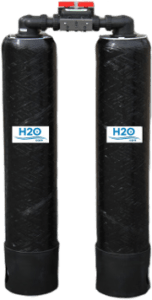
PFAS In Water Solutions
PFAS (Per- and polyfluoroalkyl substances) are a group of man-made chemicals that have been manufactured and used in a variety of industries since the 1940s. For example, some of the more common commercial applications have been for products like Teflon and stain & water–resistant materials. Additionally, they are found in paints, polishes, fire fighting foams near airports, military bases and fire fighting training centers. These chemicals are being detected at dangerous levels in drinking water supplies around the country. (For removal methods see section below, “Removal of PFAS”). Also, for an article we had published in Water Quality Magazine on PFAS in water, see PFAS Water Tech Mag.
PFOA and PFOS have been the most extensively produced and studied of these chemicals. Both chemicals have a long half-life in the environment and they can accumulate in the body over time. Also, there is evidence that exposure to PFAS can lead to adverse human health effects. Further, these chemicals are no longer manufactured in the United States, but are still made in other countries and may be contained in products imported into the U.S. See link to a town notification https://actonwater.com/water-quality/pfas.

HEALTH AFFECTS OF PFAS
There is evidence that exposure to PFAS can lead to adverse health outcomes in humans. Additionally, if humans or animals ingest it, they are absorbed and can accumulate in the body. PFAS stay in the human body for long periods of time. Consequently, the level in their bodies may increase to the point where they suffer from adverse health effects.
Moreover, studies indicate that PFOA and PFOS can cause reproductive and developmental, liver and kidney, and immunological effects in laboratory animals. Both chemicals have caused tumors in animal studies. The most consistent findings from human epidemiology studies are increased cholesterol levels among exposed populations, with more limited findings related to infant birth weights. Furthermore, the following are potential affects:

PFAS Ion Exchange Filtration System
On the other hand, there are technologies effective in removing PFAS from drinking water, especially Perfluorooctanoic acid (PFOA) and Perfluorooctanesulfonic acid (PFOS), which are the most studied of these chemicals. The most effective technologies include Ion exchange, activated carbon adsorption and reverse osmosis. For more information on removal, see https://h2ocare.com/what-are-pfas/.
Reverse Osmosis, Point of Use System

Reverse Osmosis System (Basement install optional)
This membrane based technology can be used at a point-of-use such as at a kitchen sink to feed a separate drinking water faucet as well as ice makers or refrigerator dispensers. This system can be installed under the kitchen sink. Alternately, it can be installed in the basement below, with a line run up to feed the separate faucet. For more on this technology, see http://reverse-osmosis.
For more on health related issues, see the link at https://www.epa.gov/pfas for more detailed information.


